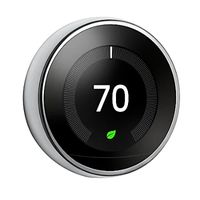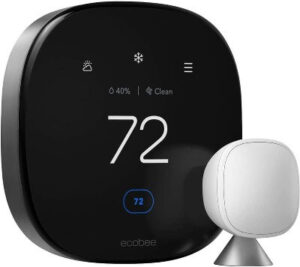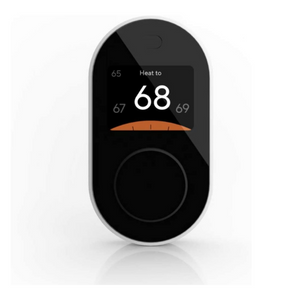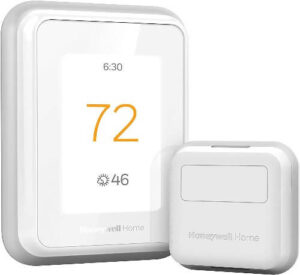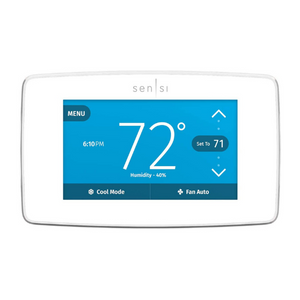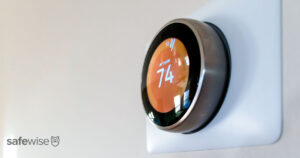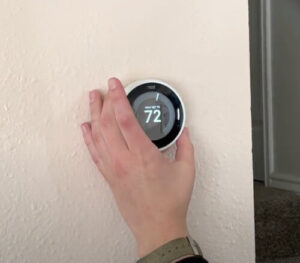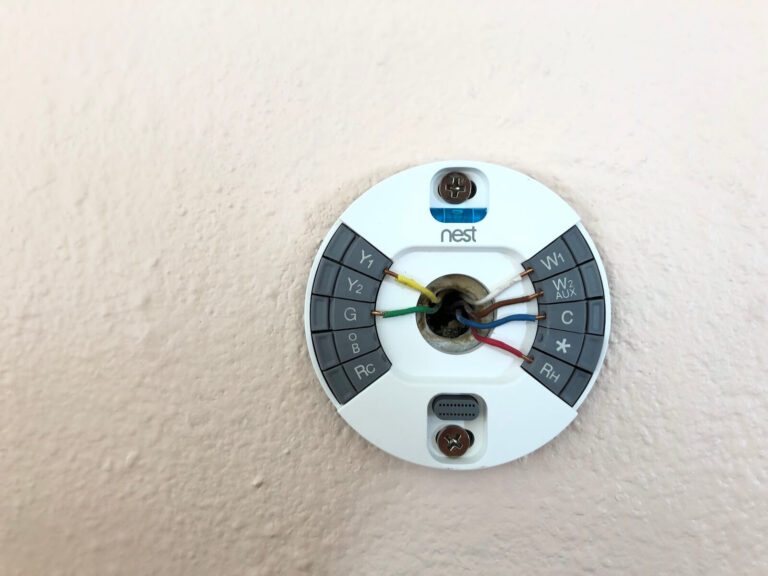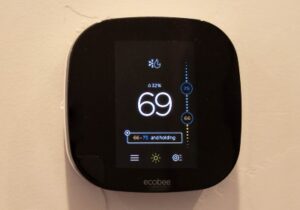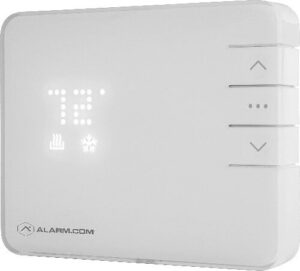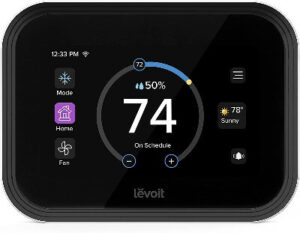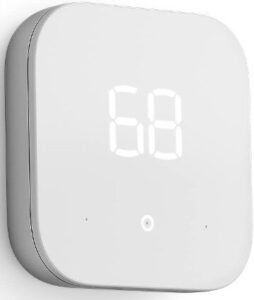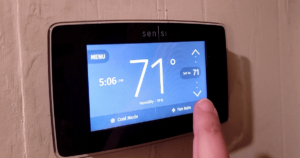What to look for when buying a smart thermostat
Before you dive into buying a smart thermostat, there are some things to check out.
Make sure the smart thermostat works with your current HVAC system. Often, the sales page will list if the programmable thermostat is compatible with zoned systems, heat pumps, and cooling- or heating-only systems.
Here's a quick vocab lesson to help you through some of the alphabet soup:
- Low-voltage vs. high-voltage systems: Most smart thermostats work with low-voltage (12 to 24V) systems instead of high-voltage (120 to 240V) systems, which are also called line-voltage systems. If you already have just one thermostat to control your heating and cooling, you probably have a low-voltage system. If you have to go room-by-room to turn on individual radiators or baseboard heaters, you have a high-voltage system. Check out Mysa's in-depth comparison to learn more.
- C-wire: Also called a common wire, a c-wire provides constant power to your thermostat. If you don't have a c-wire, your thermostat gets a power boost when the HVAC system kicks on or relies entirely on battery power. Smart thermostats use way more energy than traditional thermostats, so they need constant power from a c-wire. Most smart thermostats we evaluated come with a power adapter kit, allowing you to install them without an existing c-wire.
- ACC-/ACC+: Also called accessory wires or star terminals, these are required if you have a whole-home dehumidifier or ventilation system. They're not a common feature in smart thermostats, so double-check the thermostat's terminal compatibility before you buy.
If you're still not sure what you have, look for a compatibility guide on the thermostat manufacturer's website. You'll have to remove the cover from your current thermostat and identify some wires, but don't worry—all of the guides are easy to use.
It's annoying to reset your thermostat schedules and preferences whenever the power goes out. If you experience frequent outages or tripped breakers, look for a thermostat that has a backup battery. It's a rare feature among smart thermostats but is really nice to have.
Smoke and CO alarm compatibility
Smart thermostats play an important role in home fire safety by shutting down the HVAC system's fans when smoke is detected. According to Polina Gordonova of Lund University, this slows down the spread of smoke and fire, which can give you a little more time to escape.
You need a smart thermostat that uses the same protocols as your smart smoke detector so that you can create an automation routine with both devices. That's why we've highlighted smart home and home security compatibility in our smart thermostat reviews.
Remote temperature sensors
Your thermostat's temperature sensor dictates when the furnace or air conditioner kicks on. But if your thermostat's located in a drafty or cozy area compared to the rest of the house, you could end up with some uncomfortable temperature fluctuations throughout your home.
If that sounds familiar, look for a smart thermostat with remote temperature sensors. Scatter them throughout your home to give your thermostat more data before it fires up the AC or furnace. If those hot and cold spots persist, you might need to add dampers to your HVAC ducts. That's a job for a pro.
One more thing to think about is how many remote temperature sensors the thermostat can support. In our experience, all smart thermostats compatible with remote sensors will support at least six. Some can manage four times as many.
Occupancy sensors or geofencing
If your goal is to save energy and money with a smart thermostat, look for tech that can figure out when you're not home.
An occupancy sensor is a better option for families. The sensor is built into the thermostat itself or into its remote temperature sensors. It uses infrared technology to detect whether anyone's nearby. If no one's around, the thermostat adjusts the temperature to save energy.
Geofencing relies on your phone's location to figure out when you've left home. It's not a good option for people who don't like to leave their phone's location services on. On the flip side, your smart thermostat can also tell when you're headed back, allowing it to switch to more comfortable temps before you walk in the door.
Learning thermostats are rare. To date, we only know of four: the Google Nest Learning Thermostat, the Ecobee Smart Thermostat Premium, the Honeywell T9, and the Amazon Smart Thermostat.
These thermostats don't need to be programmed. Instead, they learn your habits—like the fact that you start walking around your home at 6:30 am. Give them enough time to figure out your schedule, and they'll program Home, Away, and Sleep modes for you. The thermostat could kick on at 6 in the morning, for example, to make sure your kitchen is comfy-cozy by the time you have breakfast.
While all learning thermostats use occupancy sensors or geofencing, not all thermostats with occupancy sensors or geofencing are learning thermostats. The difference is admittedly subtle: learning thermostats use your habits to anticipate your heating and cooling needs, whereas non-learning thermostats simply react to occupancy and geolocation data. Take care to find one that matches your expectations.
Energy Star certification
If you intend to save energy by using a smart thermostat, we highly recommend looking for Energy Star-certified units.
Here are some of the criteria smart thermostats must meet in order to earn the Energy Star certification:
- Consume less than 3.0 W on average when in standby mode
- Provide energy usage reports to the consumer
- Use a demand response strategy to save energy during peak hours
- Reduce annual heating run time by at least 8% on average
- Reduce annual cooling run time by at least 10% on average
Maintenance reminders and alerts
A new smarty-pants thermostat isn't worth its salt unless it can take some of the guesswork and stress out of HVAC maintenance. Look for one that can remind you to change the air filter, change the UV light (if applicable), and schedule seasonal maintenance. The best smart thermostats for home use also alert you when temps fall to freezing or your HVAC system runs longer than usual.
